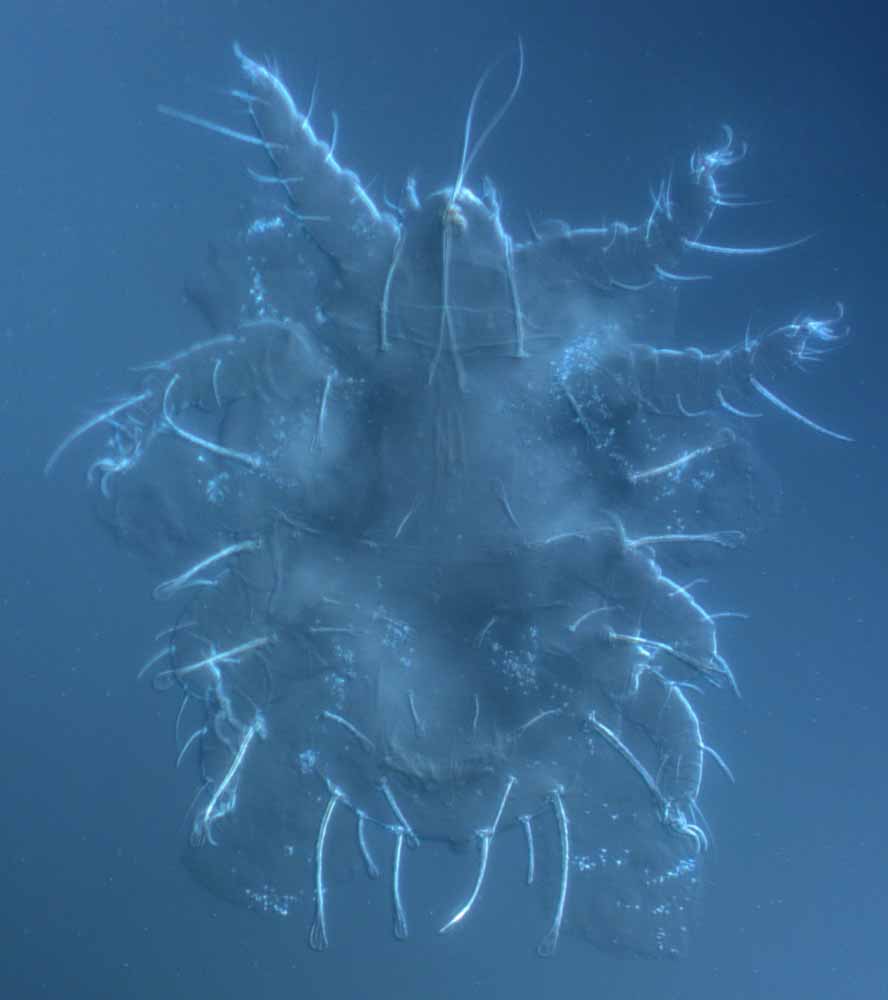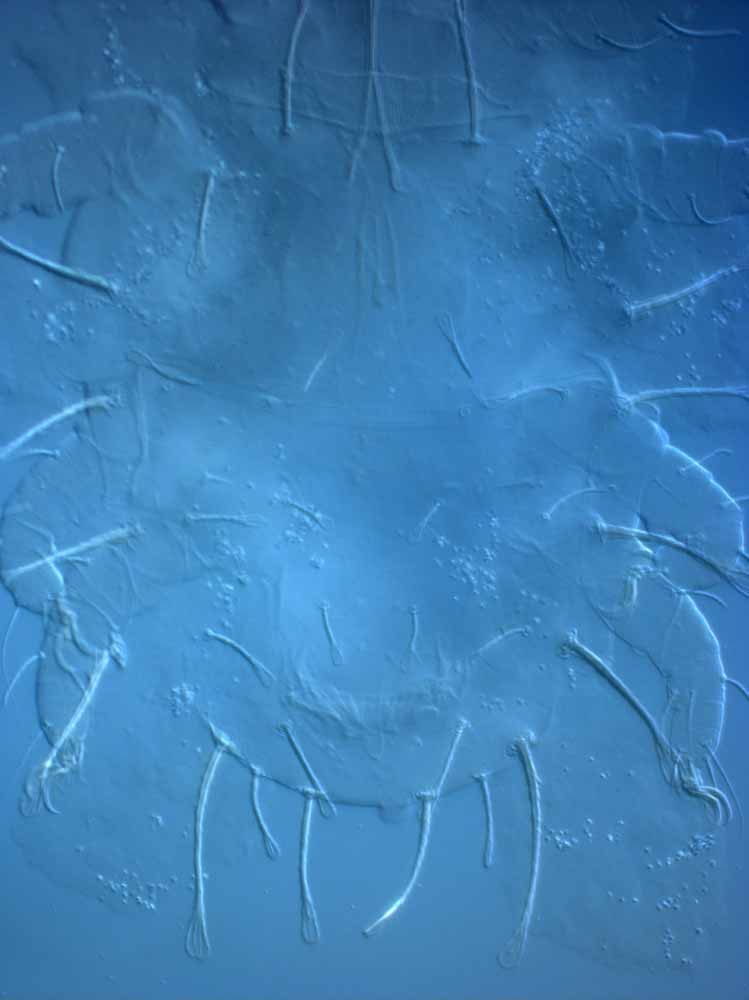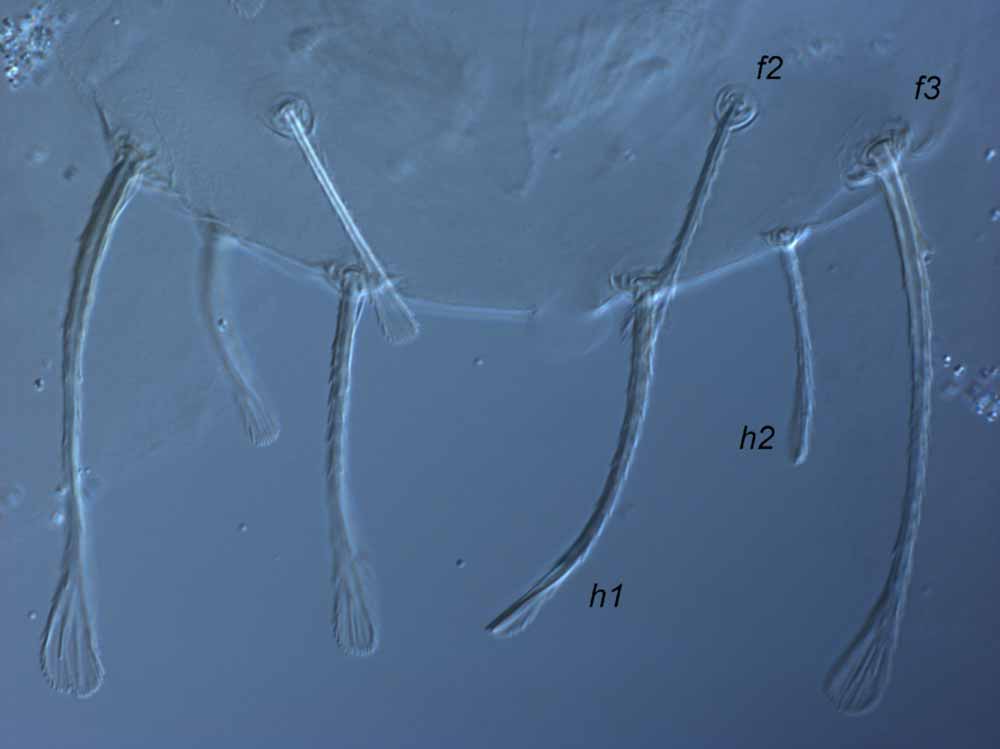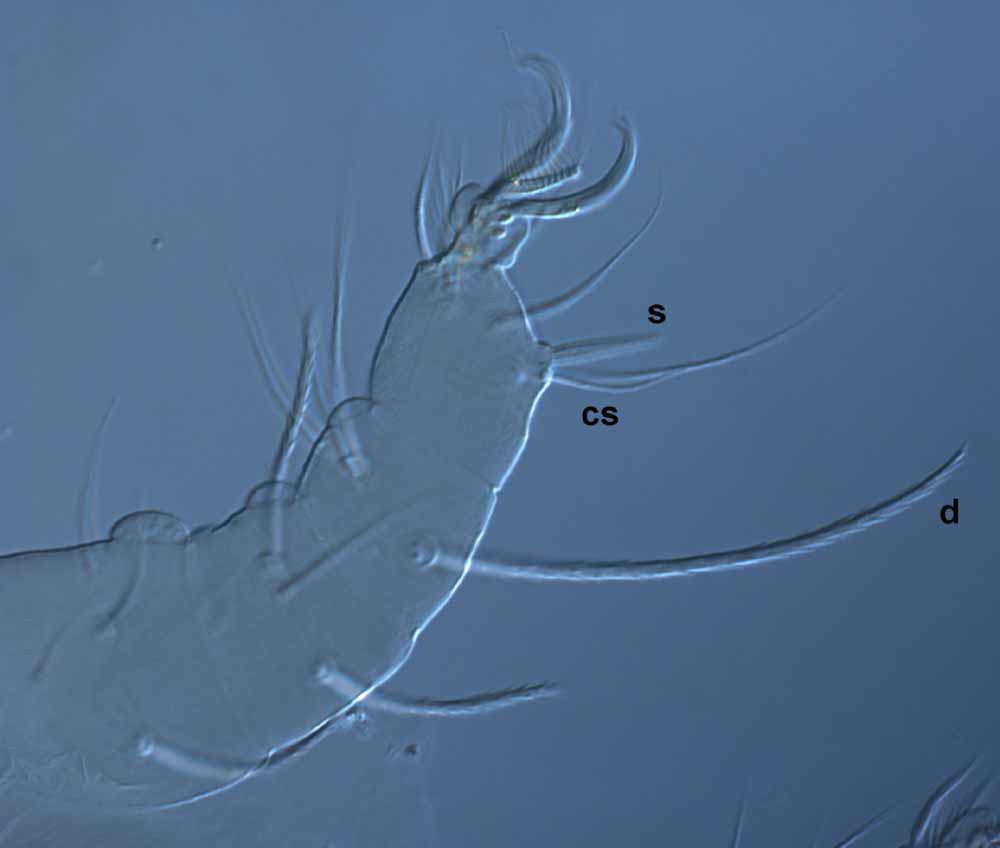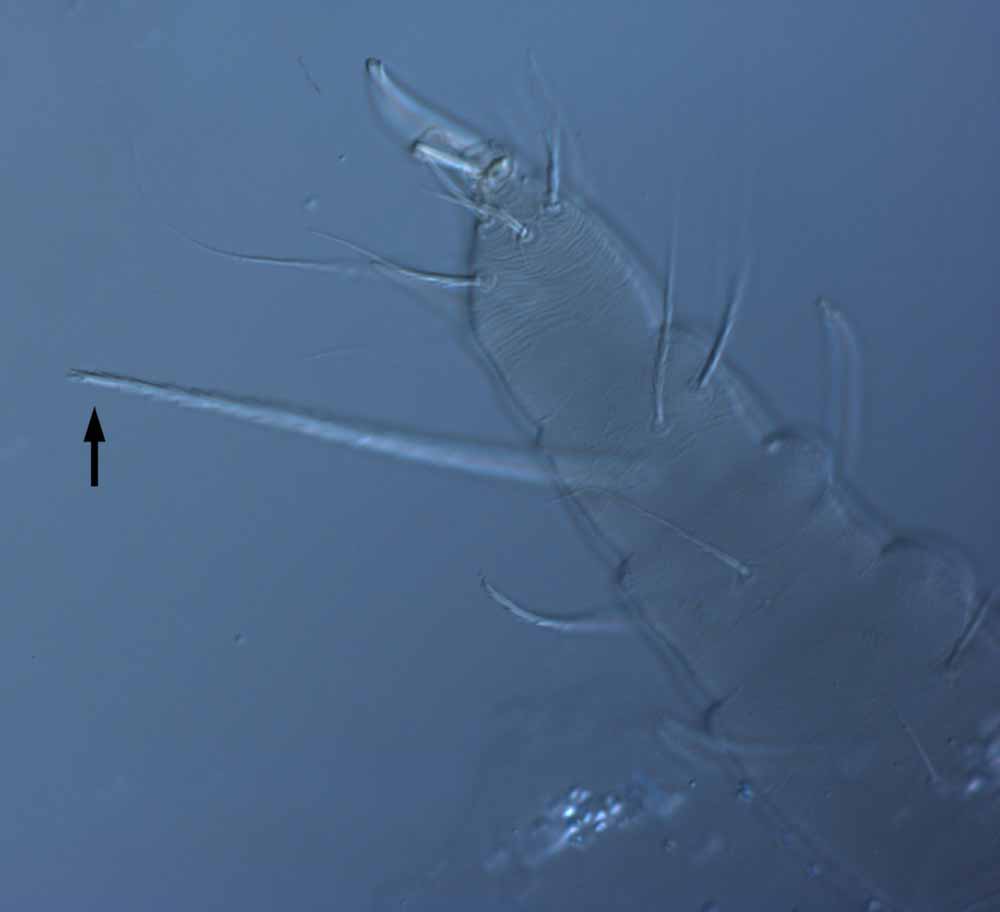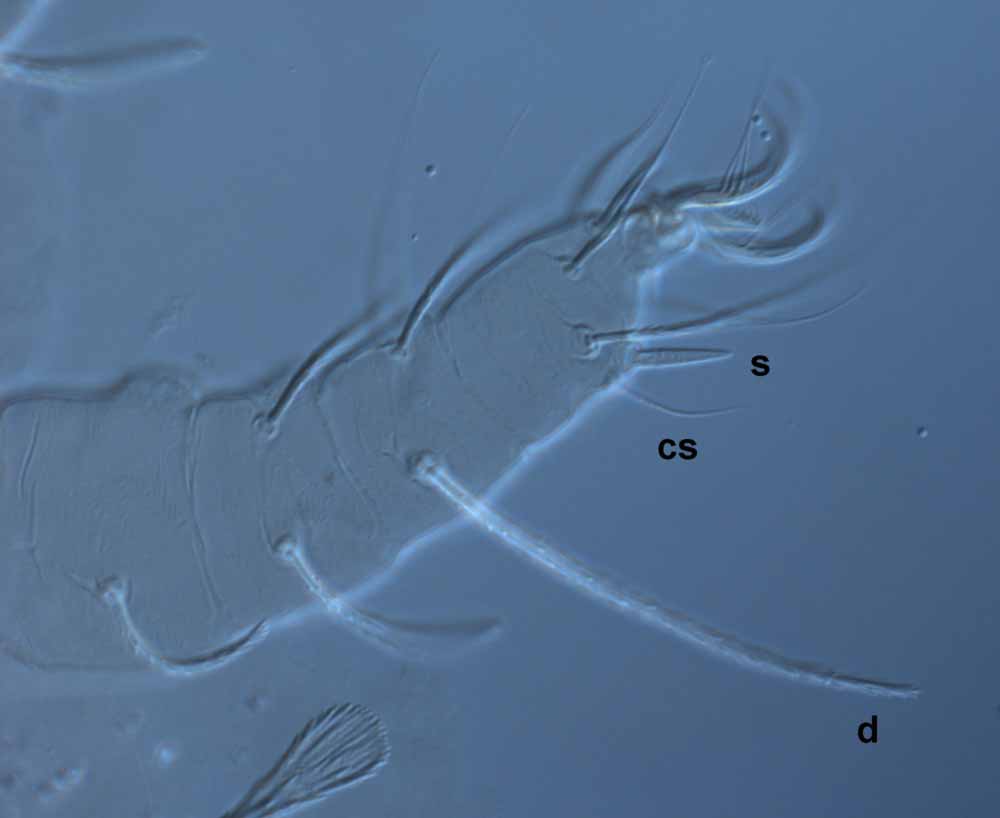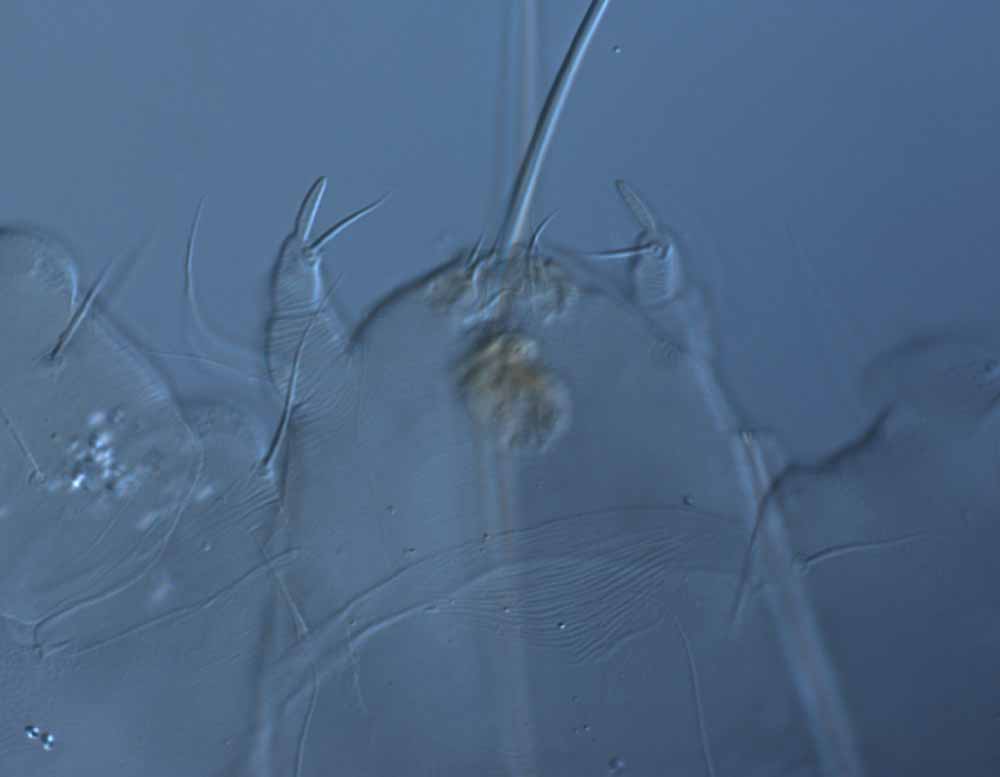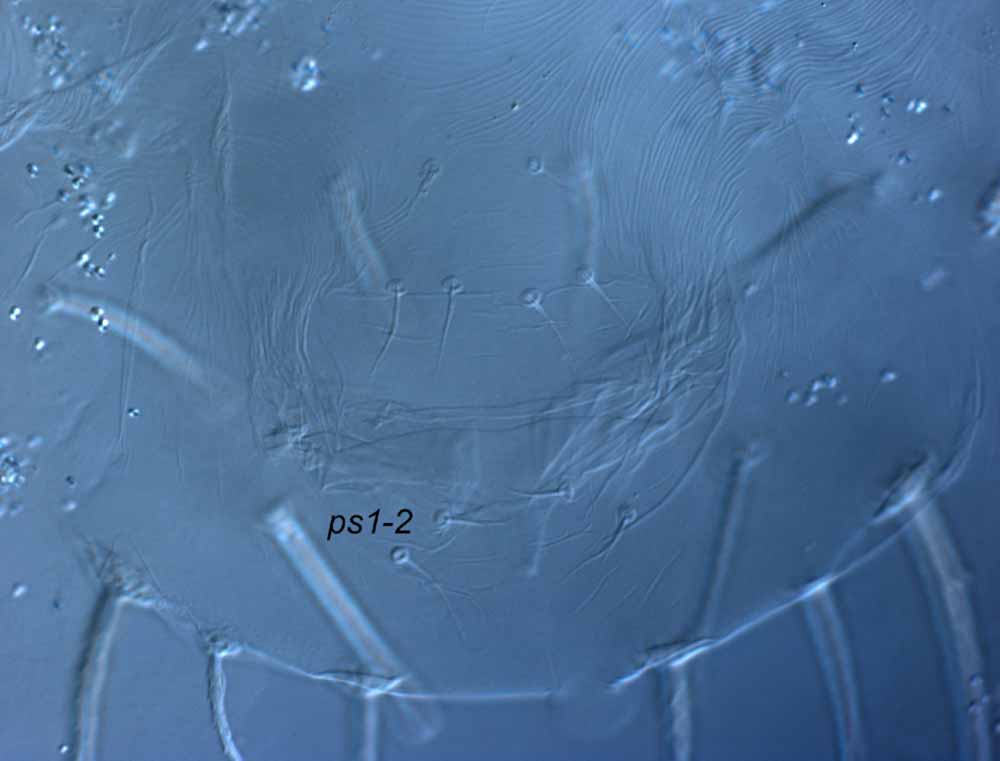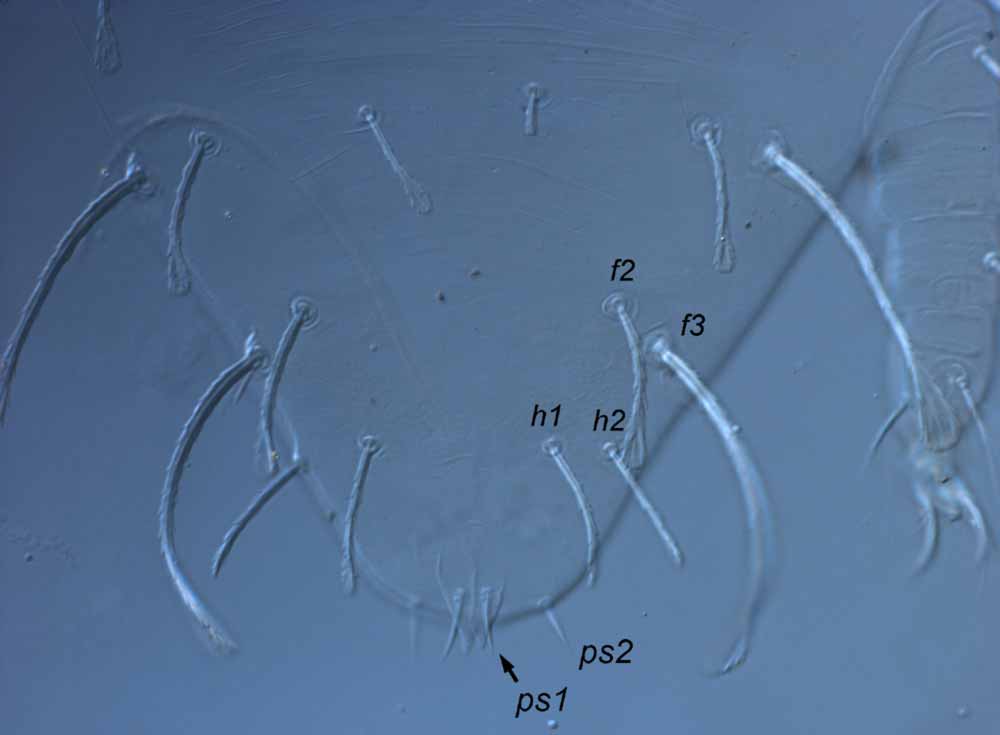Raoiella hallingi
|
Fig. 1. Raoiella hallingi adult female dorsum. |
|
Fig. 2. Raoiella hallingi adult female dorsum. |
|
Fig. 3. Raoiella hallingi adult female posterior dorsum. |
|
Fig. 4. Raoiella hallingi adult female leg I (s = solenidion; cs = companion seta; d = dorsal seta on tibia). |
|
Fig. 5. Raoiella hallingi adult female leg I (arrow indicates dorsal seta on tibia). |
|
Fig. 6. Raoiella hallingi adult female leg II (s = solenidion; cs = companion seta; d = dorsal seta on tibia). |
|
Fig. 7. Raoiella hallingi adult female palps (s = solenidion, e = eupathidium). |
|
Fig. 8. Raoiella hallingi adult female posterior venter (genital region). |
|
Fig. 8. Raoiella hallingi adult male posterior dorsum indicating short ps1 setae. |
Authority
Beard
Key characters
- setae c1, d1, e1 obviously spatulate (Figs. 1, 2)
- seta h1 longer than h2 (Fig. 3)
- seta h2 spatulate (Fig. 3)
- seta f2 shorter than f3 (Fig. 3)
- coxae III-IV nude
- femur II with 3 setae (d, bv", v' present; l' absent)
- genua I-II with 3 setae (d, l', l")
- tarsi I-II with companion seta longer than solenidion (can appear subequal, make sure seta is not broken) (Fig. 4)
- dorsal seta on tibia I weakly spatulate or with broad blunt tip (Figs. 4, 5)
- dorsa seta on tibia II with broad blunt tip (Fig. 6)
- palp tibiotarsus with one solenidion and one tapered setiform eupathidium distally (Fig. 7), and one seta dorsally
- setae ps1 and ps2 inserted adjacent to each other (Fig. 8)
- male with short ps1 setae, 9-11 microns (Fig. 9)
- male femur II and genua I-II same as female
- larva unknown
Similar species
Raoiella hallingi is morphological similar to Raoiella crebra and R. illyarrie.
Raoiella hallingi: male with trochanter IV nude.
Raoiella crebra: male with one seta on trochanter IV.
Raoiella illyarrie: male with one seta on trochanter IV.
Distribution
Australia (WA)
Hosts
Eucalytpus sp. (Myrtaceae)
Remarks
This species is placed in the wandoo species group proposed by Beard et al. (2018).
Collected from Broome in far north Western Australia.
References
Beard et al. (2018)

